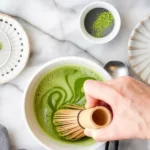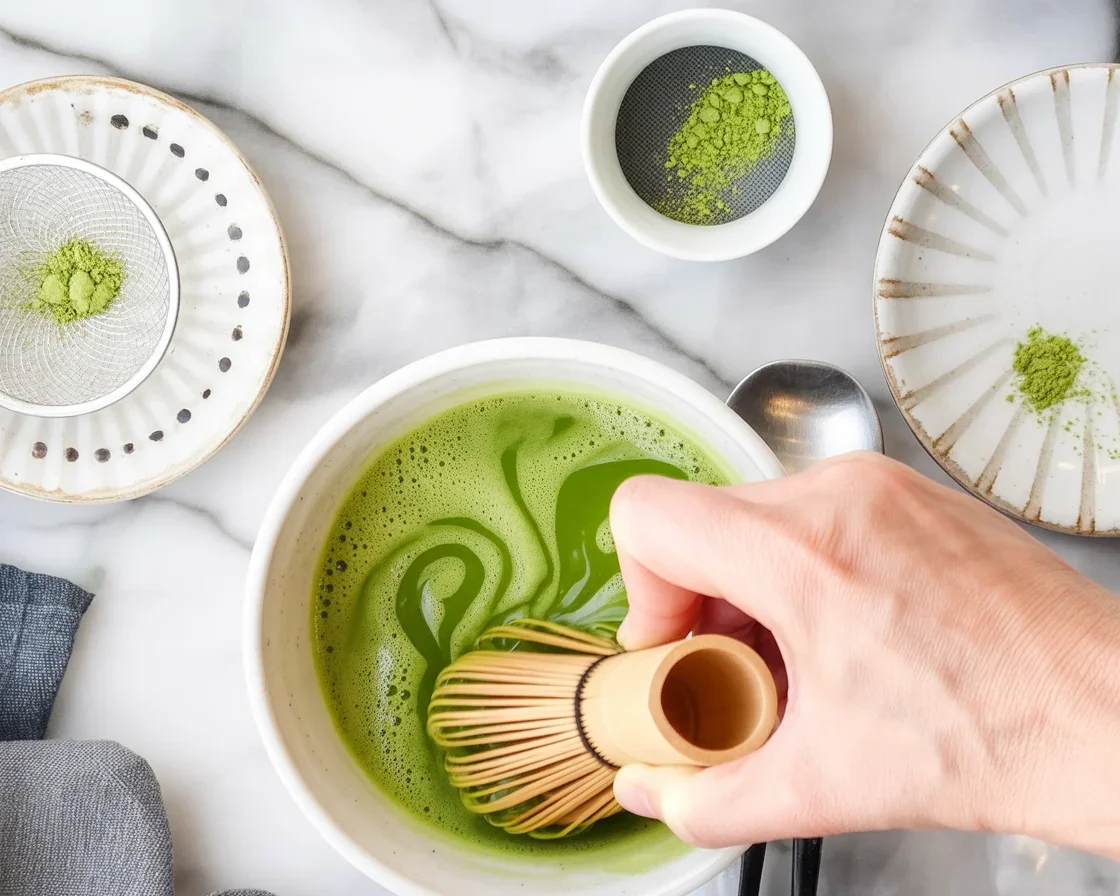Matcha recipes got me through some serious sleepy days – I’ll tell you that right now. You know that afternoon slump, where your brain feels like mashed potatoes and you wish you could just nap under your desk? Yeah, matcha recipes is my go-to rescue. But I get it – not everyone knows what makes this bright green stuff so special, or even how to deal with the powder.
You’re probably wondering if it’s just another trendy thing, or if it’s actually worth the time (and those little whisks). By the way, if you want to check out how matcha compares to other cozy drinks or want more easy tips for mornings, have a look at “best green tea alternatives” and “easy energy-boosting breakfasts” for more ideas.
What is Matcha recipes?
If you’ve never seen matcha, imagine a super-fine, bright green powder with a bit of mystery. It’s a tea, but not really like the stuff in boring office teabags. Matcha comes straight from special green tea leaves that grow mostly in Japan. Farmers shade the plants (which is already so dramatic) so they grow slower and get an extra rich flavor.
So instead of soaking leaves in water and tossing them out, you actually drink the whole leaf – well, it’s ground up, but same thing. My first sip was a little confusing, honestly, but it grew on me fast. Traditional matcha ceremonies are full of ritual, but making it at home is much easier. And the fact that it has been around for hundreds of years blows my mind.
Folks use matcha for a bunch of stuff: cozy lattes, bright smoothie bowls, and even baking. If you ever felt matcha pancakes calling your name, you’re not alone.
Characteristics of Matcha recipes
Here’s the honest truth: matcha tastes grassy. But in a good way, I promise. It’s kinda earthy and a bit sweet (not like candy-sweet, more like fresh pea pods). The color is wild – if it’s really good matcha, the green pops out at you like neon.
But the texture? Oh, that’s where things get interesting. When stirred right, matcha is smooth, almost velvety. Stir it wrong and you’ll get little lumps that stick to your teeth (we’ve all been there). There’s this little whiff of seaweed when you prepare it, which some folks love. I think it makes you feel like you’re drinking something seriously healthy.
It has caffeine, but not as much as coffee. So you get a gentle wake-up instead of the coffee shakes.
Oh! It also froths up real nice if you give it a good whisk – makes you feel like you’re some kind of tea wizard.
How to Prepare Matcha recipes
Let’s not overcomplicate things. Making matcha at home shouldn’t feel like you need a degree. Here’s my easy routine, and it’s practically foolproof:
- Scoop 1 to 2 teaspoons of matcha powder into a mug or bowl.
- Add a splash (just about 2 ounces, not a full cup) of hot water. Don’t go full boiling – you want it hot but not volcanic.
- Whisk it up! If you don’t have a fancy bamboo whisk, a small kitchen whisk or even a fork works. Go for a smooth, bubbly top.
- Pour in more hot water or steamed milk to taste. Sweetener is optional – I just use a tiny bit of honey sometimes.
Now, you can use matcha in smoothies, cookies…pretty much anywhere you want a green kick. My guilty pleasure: throwing some into vanilla yogurt. It’s almost a dessert.
Benefits of Matcha recipes
Okay, so people rave about matcha’s health perks. I’m not a scientist, but here’s what hooked me: you get a dose of caffeine for energy, but with a little “zen” thrown in (thanks to L-theanine, which is supposedly calming). Honestly, it helps when I’m working on a wild deadline.
Matcha is full of antioxidants, at least that’s what every health article claims. It’s supposed to support metabolism, too. I mean, I wouldn’t ditch my veggies just for matcha, but as a little bonus? Yes, please.
I notice it doesn’t give me those jittery coffee crashes either. And hey, it helps me drink more water — matcha lattes feel like a treat, not a chore.
“I swapped my second coffee for matcha and felt way less anxious through the day. Plus, my skin looks kind of glowier? I’ll take it.” – Alex, Portland
Difference from Other Green Teas
Here’s where things get fun. Most green teas are just leaf pieces. So you make the tea by soaking and tossing the leaves. But matcha? You actually drink the powdered leaf, so you get everything – flavor, vitamins, the whole shebang.
Normal green tea is usually lighter in both taste and color. It doesn’t get all foamy or creamy like a proper matcha does. Also, matcha has a bit more caffeine, so if you’re after the zing, it’s the right pick.
Kind of wild, but growing and shading the leaves for matcha makes them sweeter. Other green teas can taste kind of bitter in comparison. I used to be a basic green tea bag person, but now, if I have matcha on hand? No contest.
Some people ask if you can swap regular green tea for matcha in recipes. Honestly, the two don’t play the same role at all – you wouldn’t get that cool color or depth with the regular stuff.
Common Questions
What is the best thing to mix with matcha?
Plant-based milk like oat or almond is perfect for a creamy matcha latte recipe. It balances the bitterness of matcha powder and enhances flavor.
Why is Gen Z obsessed with matcha?
Gen Z loves matcha for its natural energy, antioxidants, and trendy uses in matcha recipes baking, like matcha cookies and iced lattes.
What is the best way to consume matcha?
Drinking it as a hot or iced matcha latte recipe is easy and delicious. You can also bake it into cookies or cakes for a fun matcha recipe twist.
Can matcha lose belly fat?
Matcha supports metabolism and fat burning thanks to its caffeine and catechins. It’s often included in matcha tea benefits related to weight loss.
What shouldn’t you mix with matcha?
Avoid boiling water (over 175°F) as it destroys nutrients in matcha powder. Also, steer clear of refined sugars that cancel out matcha benefits.
Is matcha healthier than coffee?
Yes. Matcha offers calm energy without jitters and is rich in antioxidants, making its matcha benefits superior to regular coffee for many people.
Ready to Try Matcha at Home?
If you’re curious at all, just grab some matcha and play around. There’s no rulebook for making your own favorite drink, and the internet is full of guides like Matcha – Wikipedia or even this Matcha 101 – What It Is and How to Use It Recipe – Love and Lemons. Want to get the real stuff? I’ve had good luck getting mine from Matcha Green Tea Powder | Authentic Matcha Tea | Matcha.com. You don’t need to be a tea master, just have fun. If you mess up, it’s just tea – not the end of the world. Cheers to a more delicious, energetic day with a little help from matcha.

Matcha
Ingredients
For the Matcha Preparation
- 1-2 teaspoons Matcha powder Choose high-quality, vibrant green matcha for the best flavor.
- 2 ounces Hot water Not boiling, just below boiling point.
- to taste Hot water or steamed milk Optional for use as a latte.
- to taste Sweetener (e.g., honey) Optional for sweetness.
Instructions
Preparing the Matcha
- Scoop 1 to 2 teaspoons of matcha powder into a mug or bowl.
- Add a splash (about 2 ounces) of hot water.
- Whisk until smooth and bubbly, using a bamboo whisk or a small kitchen whisk.
- Pour in more hot water or steamed milk to taste.
- Add sweetener if desired.






